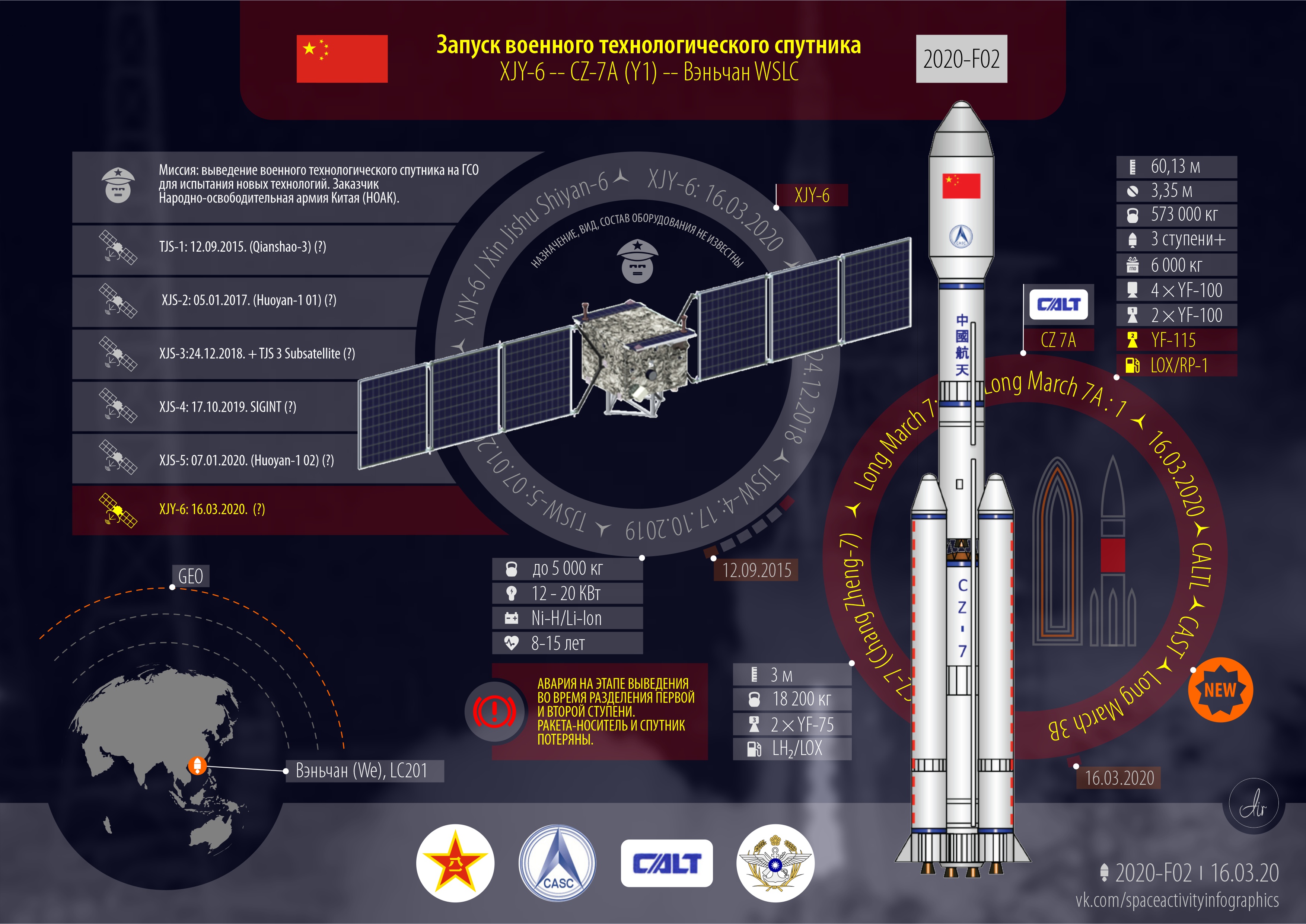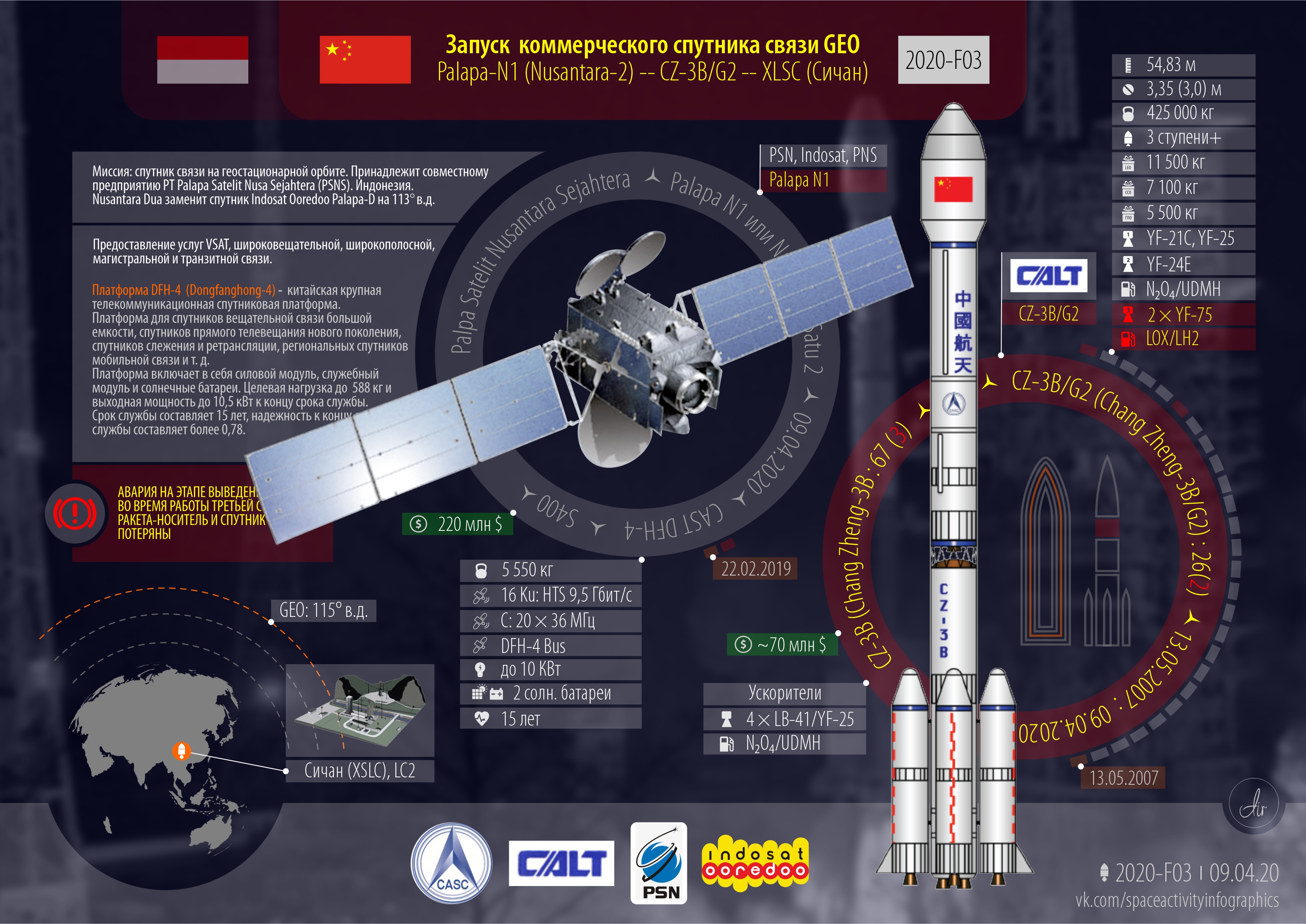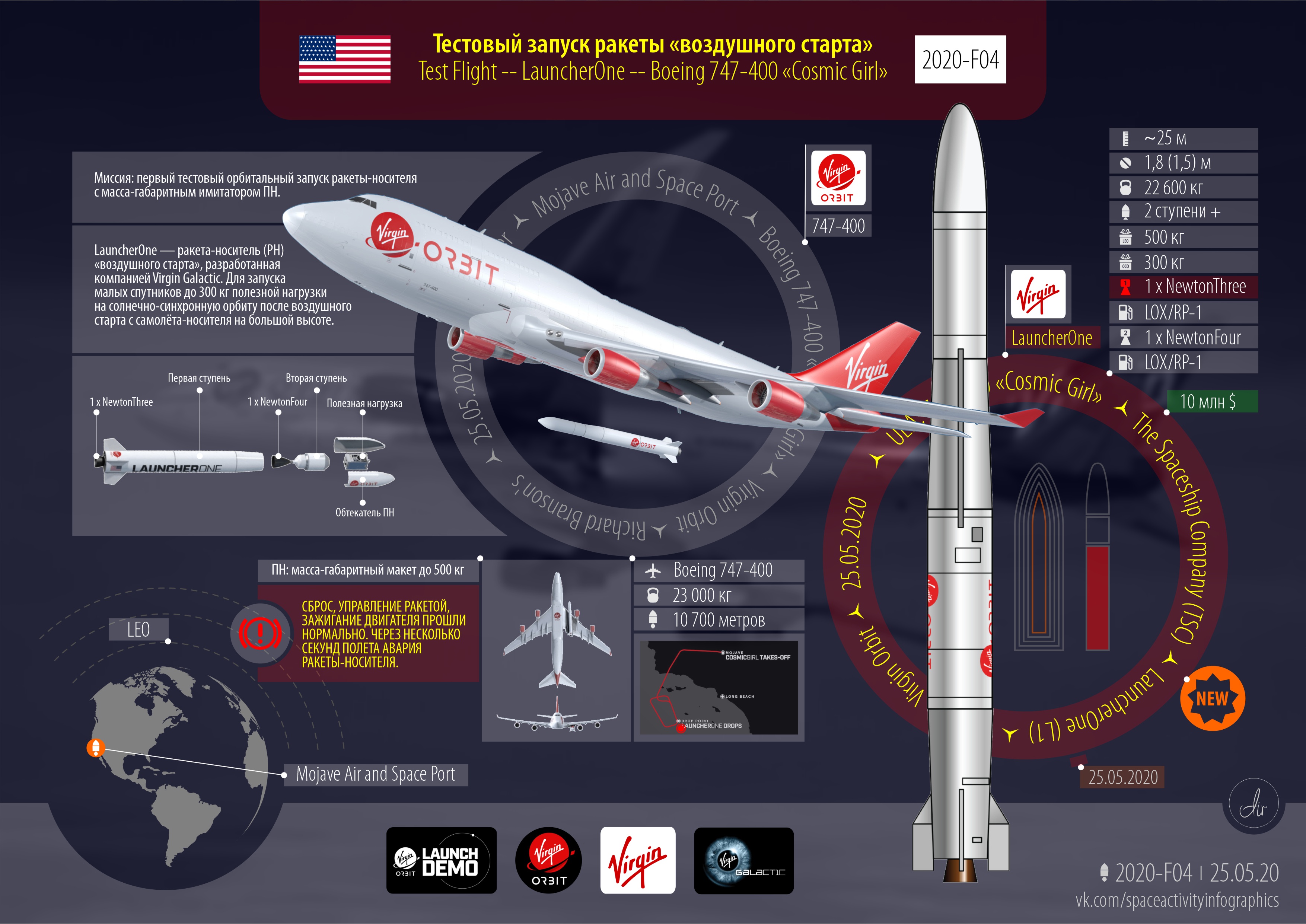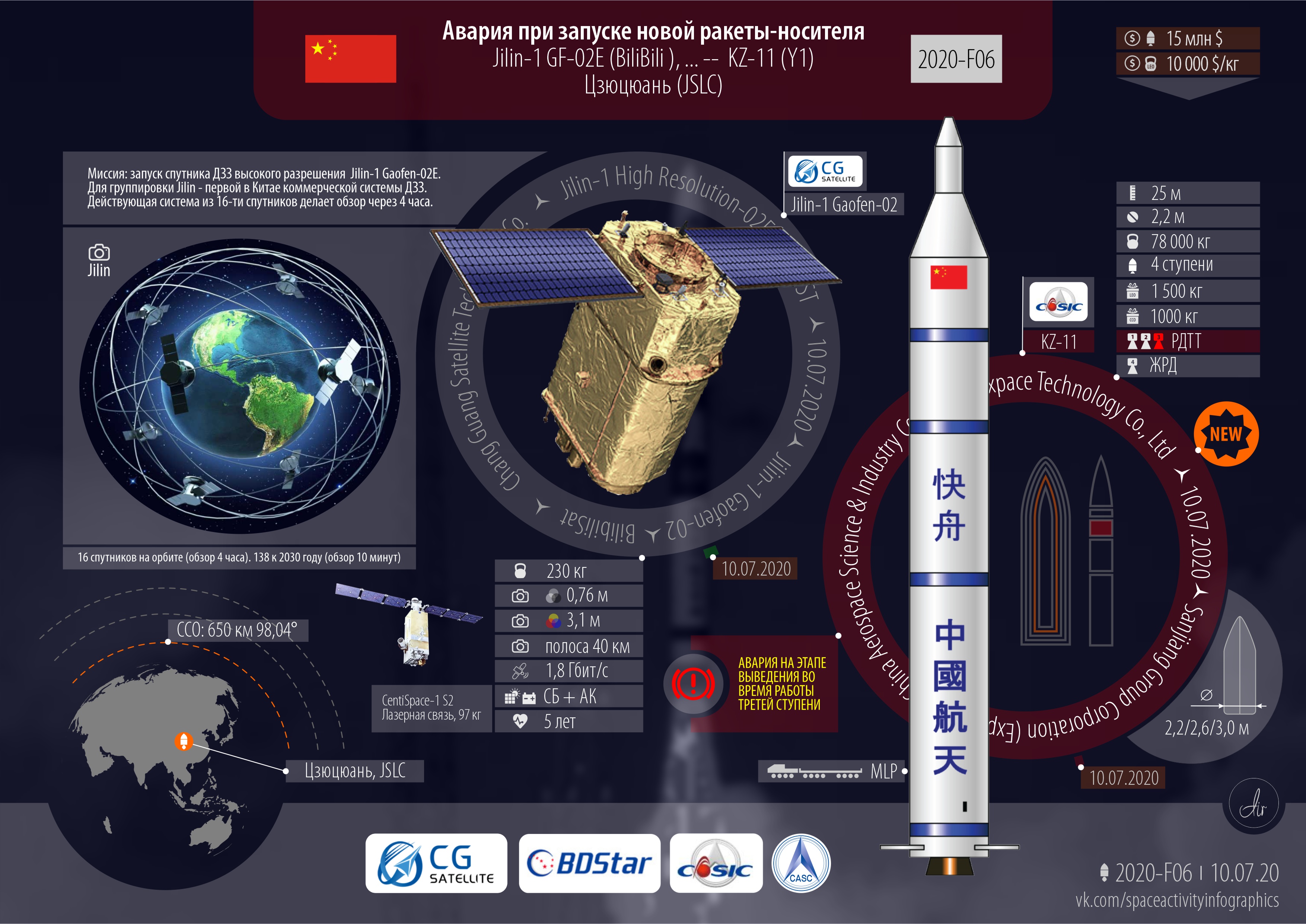2020 is frightening not only with a pandemic. The reduction, delays and postponements of orbital missile launch programs have affected all countries of the world. And the number of accidents in six months (with a reduction in launches) has already exceeded the last year and equaled a full 18. Let us recall these accidents and try to assess their significance.
Six accidents with launch vehicles from China, USA and Iran.

1. The accident during the launch of the Iranian launch vehicle Safir-2A. A shallow racket with a cheap simple companion. Given the depressing flight statistics, this is not surprising. It is not for nothing that the second successful launch in Iran was made by another rocket, another team, and from another cosmodrome.

2. Accident when launching a new launch vehicle CZ-7A. Medium-class launch vehicle, fourth generation. The accident for the new missile is quite an expected ending, but it's a pity for the technological satellite (military). The second most important accident of the year.

3. Accident during the launch of the proven CZ-3B launch vehicle.The main and most powerful (until recently) missile in China. Serious and expensive loads ... The most severe accident of the year - a heavy commercial geostationary communication satellite of another country was destroyed.

4. Accident during the launch of the new original launch vehicle LauncherOne from the private American company Virgin Orbit. Ultra-light "air launch" rocket. Instead of a satellite, a mass-dimensional layout.

5. Accident during the launch of the Electron launch vehicle from the private American company Rocket Lab. Ultralight rocket. Several commercial small satellites (7) were destroyed.

6. Accident during the launch of a new KZ-11 carrier rocket from the private Chinese company Expace (a subsidiary of CASIC).Lightweight solid rocket. A high-resolution commercial remote sensing satellite was destroyed.

What can I say:
- Accidents during the first launch of a new launch vehicle are highly likely. Which is fully confirmed by the real results of this year. There were three launches of new launch vehicles and they all ended in accidents.
- It is a bad idea to use real devices as payload for the first start. Unless it's a cheap serial satellite. The classic approach was demonstrated only by the American Virgin Orbit, using a "blank" instead of a satellite. The Chinese were let down either by arrogance or by the deliberate risk of launching real satellites on a test flight.
- Fashionable rackets and public relations did not help the "icons" of the American New Space to avoid accidents.
- The loss of a commercial, heavy and expensive communications satellite in a Chinese rocket crash was a heavy blow to the space insurance business (potentially) and the prospects for promoting Chinese commercial launches to a world (which already has few launches).
I'd like to interrupt this account and end the year without accidents. Each of which is a "small tragedy" (and for some, a serious one) for the launch company and payload owners.